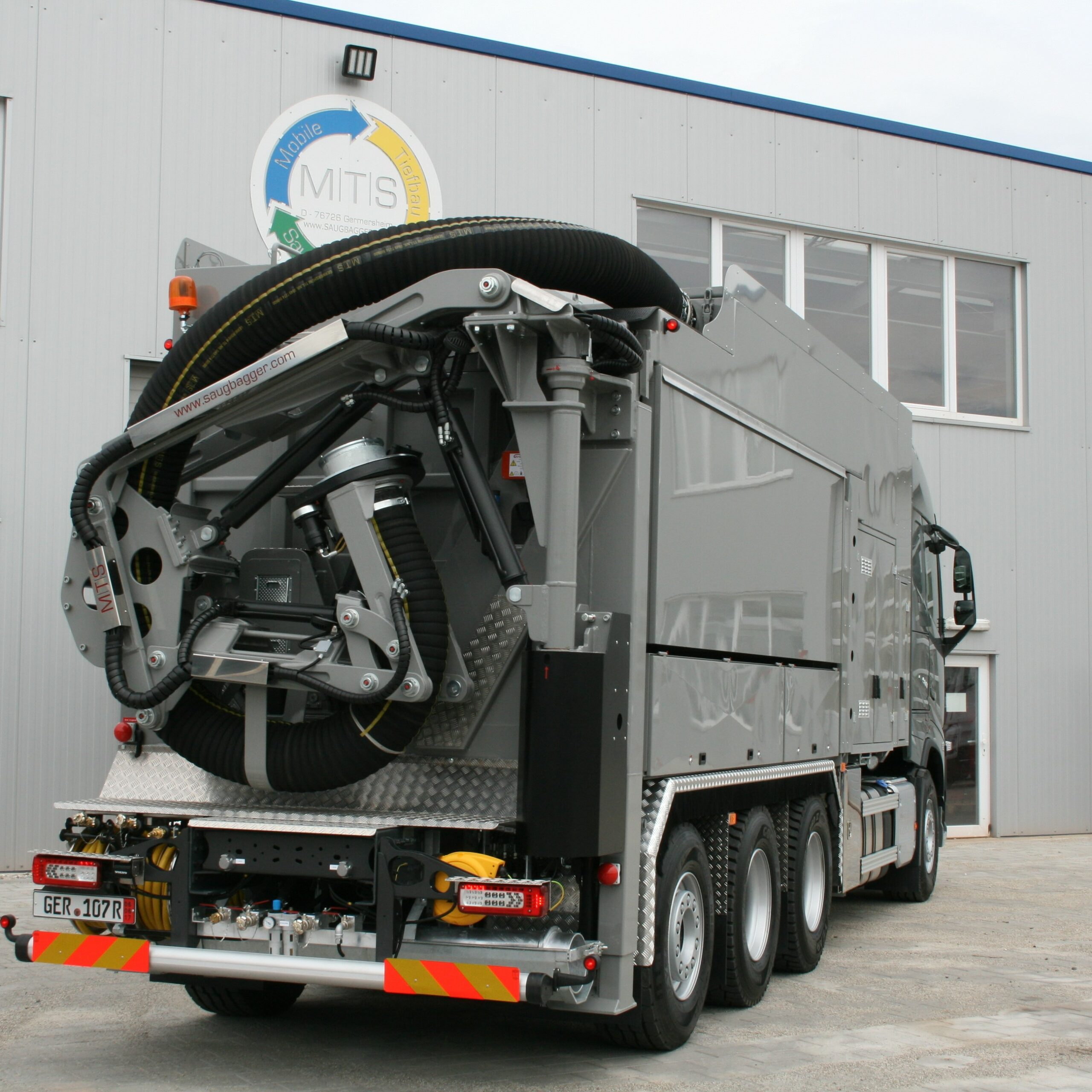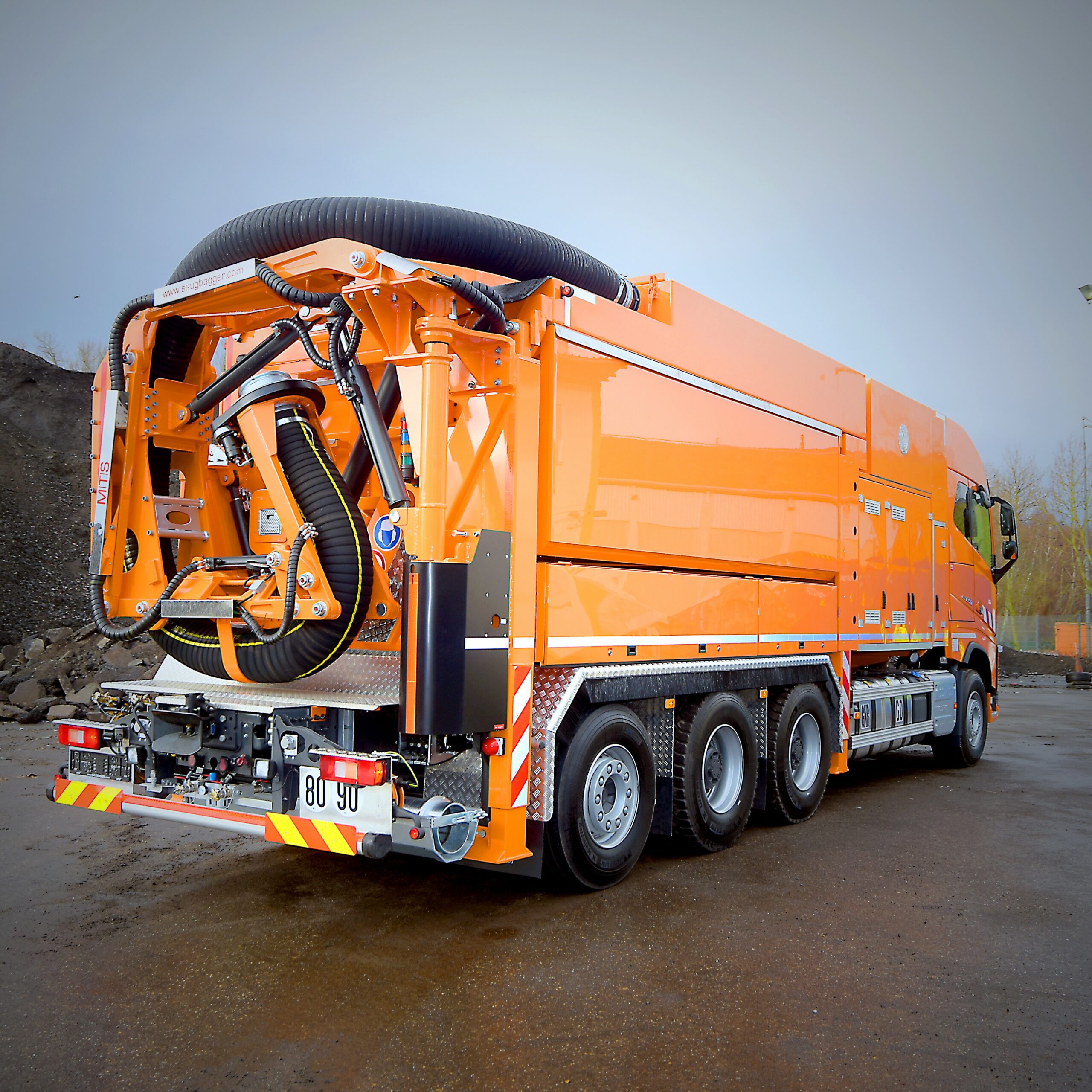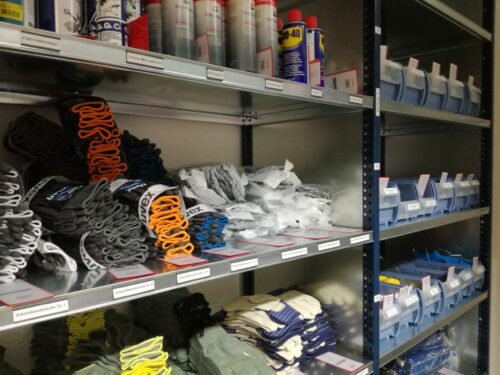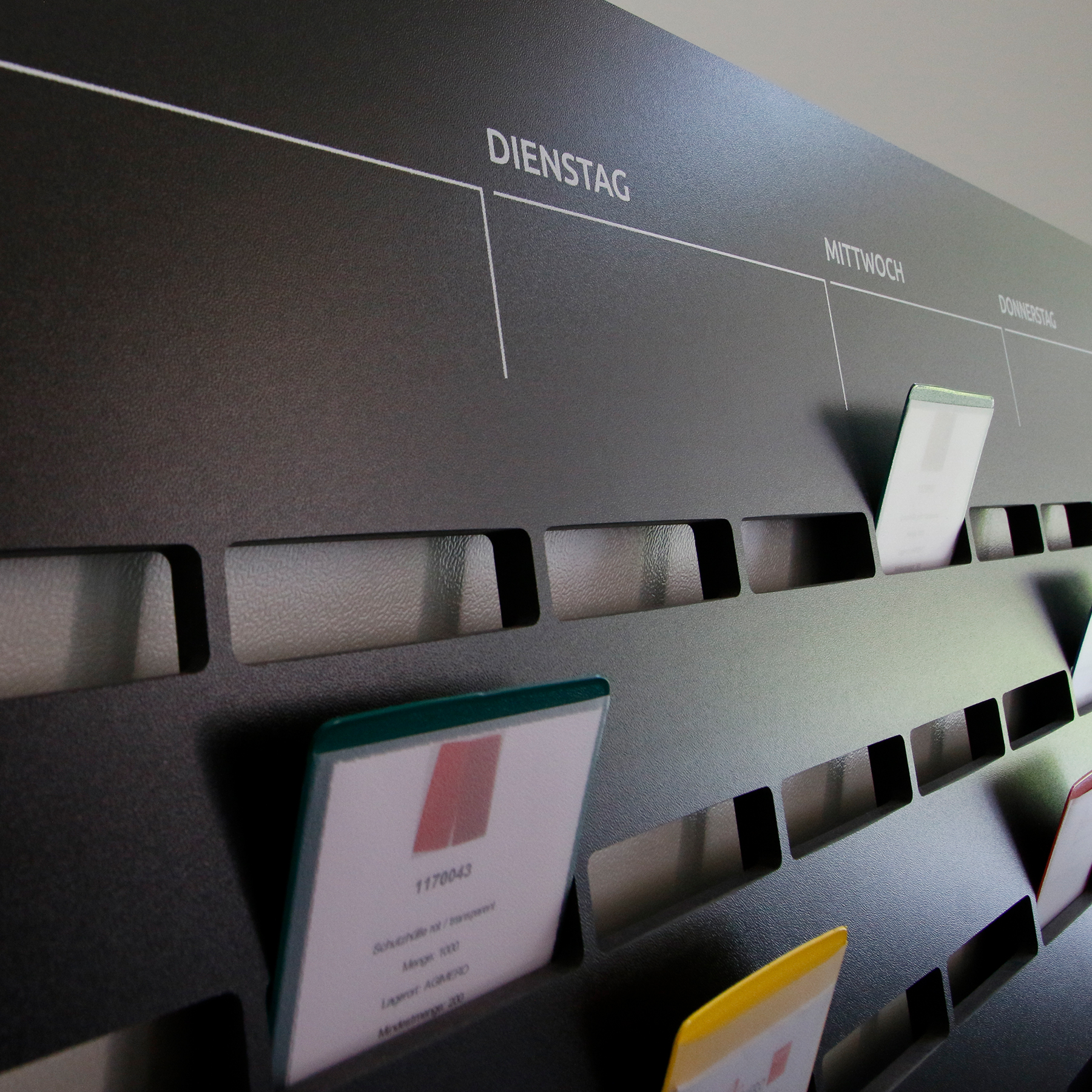Suction dredger method
Efficient procurement projects without roadblocks (delays)
“Milees of traffic jams, nothing works, detours and annoyed drivers are a disadvantage of mostly long-lasting road works.
If you then look at procurement projects, you can see a lot of parallels. Projects take what feels like forever, project members are annoyed, and even redirections don’t bring the project any closer to its goal. There is an easier way, namely with the ‘suction dredger method’.”
The suction dredger is used wherever manual labor is otherwise required. As a result, cost savings of up to 60% are possible. “Sucktioning instead of shoveling” is a typical slogan for the innovative construction machine. The aim is to carry out the work/activity as effectively and efficiently as possible without damaging the infrastructure in the ground and/or causing unnecessary damage to the infrastructure around the construction site. The machine penetrates to the problem (e.g. damaged water, gas or power lines) in a minimally invasive manner, exposes the problem, repairs it and then closes it again.

Derived from purchasing, this means that here, too, we consciously avoid large construction sites (never-ending projects), roadblocks (nothing works anymore) and detours (we will do this until we have something better). Instead, we take our mental “procurement suction dredger” and use it wherever it can achieve a great deal with little effort. When I took over my tasks as the responsible head of purchasing in our expanding, medium-sized company, the questions naturally arose: where is the best place to start, what are the current critical delivery situations and how should purchasing be sensibly aligned for the future. Ingrained processes and structures had to be adapted without disrupting the very dynamic and customer-oriented production. If we are already producing products for the efficient handling of construction sites, then these core mechanics should also be usefully applicable to my projects. It is interesting to note that the suction dredger product and its use reveal some amazing parallels to purchasing processes or purchasing projects.

Its first use was to free up space in the procurement of indirect materials. Instead of looking for every possible alternative (traffic jam), using an Internet marketplace (detour) or making a complete change to the existing processes (never-ending construction site), we transferred the advantages of a suction dredger into a requirement for a purchasing solution for the indirect materials.
We were supported by the procurement solution smartPRO, which has been proven for years and with which we were able to implement all requirements almost 100%. The purchasing solution adapts to us and not vice versa. Following the suction dredger principle, we were able to cover approx. 85% of our requirements in the indirect area in just a few days, with only one creditor (we also opted for this). The idea of a procurement alliance suits our company because it means that we neither become dependent nor lose transparency over the procurement market.
The “purchasing suction dredger” has thus achieved a broad spectrum of optimization in a selective and targeted manner, without having to disrupt existing processes, hold lengthy training sessions, or unnecessary supplier meetings. The changeover to the new processes is running largely in the background and is being strategically controlled and refined by our purchasing team.
The scope in purchasing – and in financial accounting – could be used immediately to take care of the important purchasing issues. Here, too, the respective topic was “sucked up” selectively, the repair site was worked on (strategic purchasing) and closed again. Without major roadblocks.

We are currently digitalizing the supply of goods in our Kanban warehouse. Together with the responsible colleagues, we have “vacuumed” everything around the topic. The optimizations are now visible and can be leveraged. In this case, this means that orders can be triggered immediately without further effort. This is possible with the QuWwikiBOARD. If you like, also a small suction dredger — targeted, selectively applicable, without much effort (construction site).
In the Kanban warehouse, a Kanban card is now simply inserted, orders are placed fully automatically, done.
When the goods arrive, the card is removed and placed in the storage location with the goods (classic Kanban). No more manual entry, no unnecessary typing into any system, no intransparent processes. And yet we have all the information / data we need and can thus successively make further optimizations in the subsequent processes without disrupting the new workflows. On this topic, too, the advantages of implementing purchasing projects according to the “suction dredger method” become apparent.
MTS Saugbagger GmbH, based in Germersheim, Germany, manufactures innovative suction dredgers and suction systems. Due to the high benefit for clients all over the world, the company has been expanding steadily for many years now. The number of employees has almost doubled within 2 years.

Test it without obligation.
No matter how big your company is, we will find the right way to get you started with digitalization.
Give us a call: +49 170 76 12 489
Send an email

Martin Braun
Your expert for your digitalization project
Phone: +49 170 76 12 489
Email: martin.braun@quwiki.com
